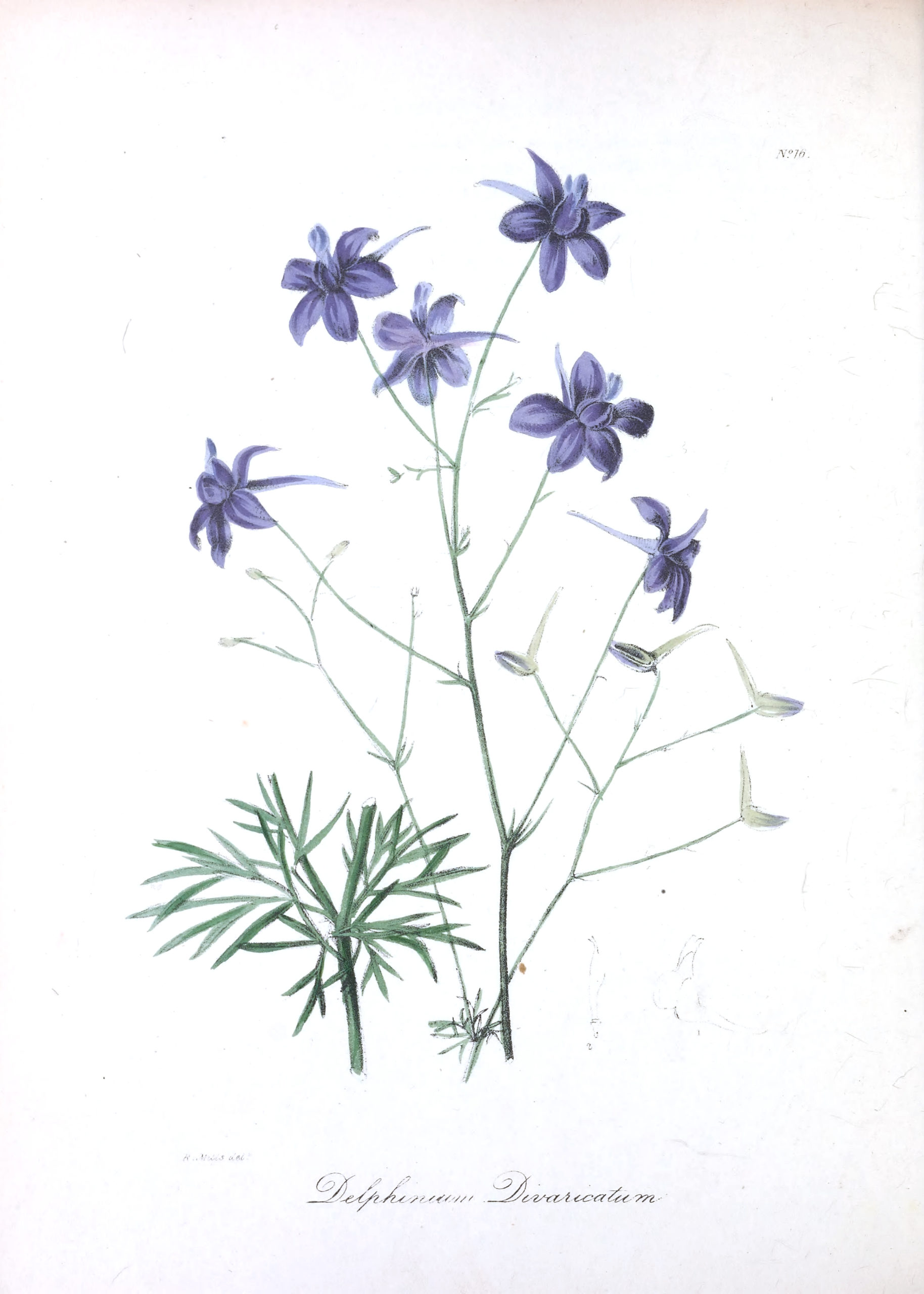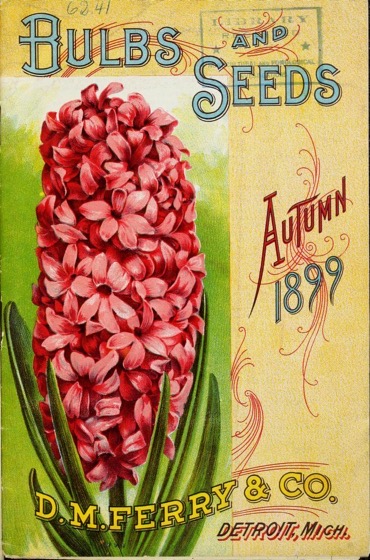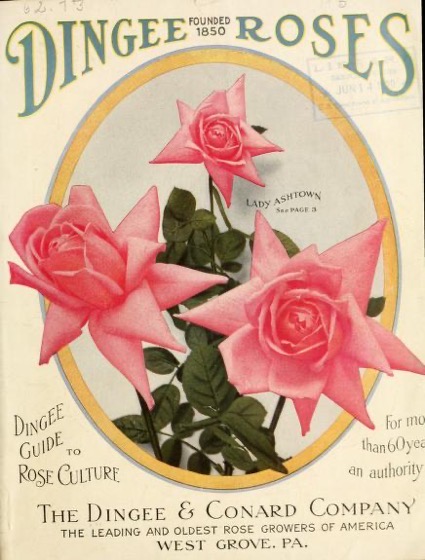D. divaricatum ; caule divaricatissime ramoso, pubescenti ; foliis multipartitis, laciniis linearibus acutis ; floribus pedicellis brevioribus ; petalis integerrimis ; folliculis sericeis. Descr.—Stem very much branched and exceedingly divaricated, somewhat pubescent ;leaves with many divisions divided down to the petiole, divisions linear acute ; flowers shorter than the pedicels ; petals very entire ; follicles covered with silky hairs. Delphinium divaricatum. — Ledebour. T his beautiful annual is a native of Caucasus, on the grassy banks of the River Gandscha, where it was collected in 1834 by Mr. T. F. Hohenacker, Botanical Traveller for the Unio Itineraria. When arrived at a state of maturity, it forms a complete pyramid, upwards of five feet high, its widely spreading lower branches occupying a space of more than two feet in diameter. It will readily be conceived, therefore, that, covered with flowers from the base to the apex, it makes a most attractive appearance; and being perfectly hardy, is highly deserving of cultivation.
Our drawing was made from a plant raised from seeds sent to the Birmingham Botanical and Horticultural Society ; it flowered last summer, and is the only living plant we have at present seen. We have compared it with specimens which we received from the Unio Itineraria, and find them to agree in every particular. It appears to be nearly allied to Delphinium consolida, if we examine the character given by De Candolle in his Prodromus, or that given by the late Sir James Edward Smith in his English Flora ; but, on comparison, there can be no doubt of their being perfectly distinct. From D. consolida it differs in being very much more branched ; in its branches being more slender ; in having flowers shorter than the pedicels, with the petals very entire at the margin, not crenate, as the petals of Consolida are represented in English Botany ; and also in the colour of the flower, which approaches the purple of puniceum rather than the usual colour of the genus.
Of the other annual species of Delphinium, two are to be found in almost every garden; D. Ajacis, or rocket; and D. consolida, or field larkspur. Of the first there are many beautiful double varieties of all colours ; the merits of which are estimated by florists according as they are more or less dwarf in their mode of growth ; and produce flowers more or less double. All tall-growing, as well as single-flowered plants are generally weeded out, in order to insure genuine seeds. The tall, branching larkspurs are also of various colours, some of which produce double flowers, but have not obtained so much notice from florists. Both should be sown where they are to remain ; a portion in August for early, and a portion in March for late flowering : covered with not more than half an inch of soil. Plants of the dwarf rocket should be four inches apart ; the branching varieties should be distant from nine inches to one foot. A rich soil grows them in the greatest perfection. Can a reason be assigned why so many plants in Ranunculacem produce double flowers ?
The natural order Ranunculacece consists of herbs (very rarely shrubs) with alternate or opposite, much divided leaves ; the petiole of which is dilated at the base, and forms a kind of sheath, which half embraces the stem. For the essential botanical characters by which they are distinguished, we beg to refer our readers to Lindley’s Natural System of Botany. As regards the geographical distribution of the order, the largest proportion of them is met with in Europe ; some are found in North America, some in South America, and some in Asia. Very few are found in Africa, except on the shores of the Mediterranean. In New Holland, according to De Candolle, 18 species have been discovered.
The genus Delphinium is divided by De Candolle into four sections ; the first of which contains such species as have but one ovarium or seed-vessel, and four petals united in one, as in our present plant. They are about twelve in number, and are all annuals.
Fig 1, 4 petals united ; 2, the capsule, which (as in all the species of De CandohVs section consolida) is single.
Podcast: Play in new window | Download
Subscribe: RSS





